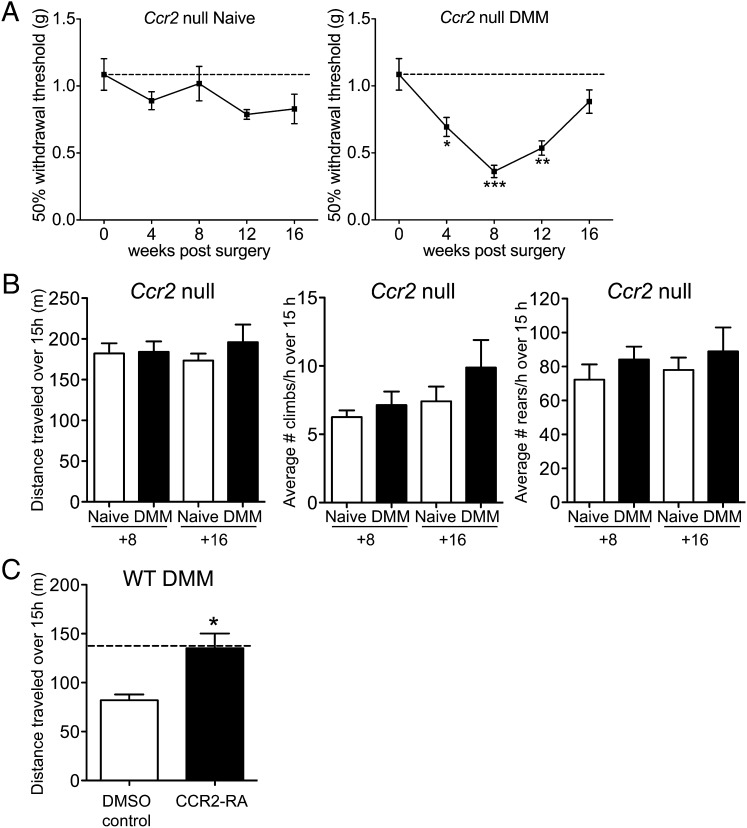Fig. 4.
Ccr2-null mice present different pain-related behaviors after DMM surgery. (A) Mechanical allodynia in Ccr2-null naïve (n = 6–11) and DMM mice (n = 5–10), Naïve time 0: n = 17, one-way ANOVA with Bonferroni’s multiple comparison test, *P < 0.05, **P < 0.01, ***P < 0.001 vs. Time 0, Mean ± SEM. (B) Distance traveled, average number of climbs per hour, and average number of rears per hour during a 15-h period. At 8 wk, naïve n = 6, DMM n = 9, P > 0.05 by two-tailed t test. At 16 wk, naïve n = 11, DMM n = 6, P > 0.05 by two-tailed t test. (C) Distance traveled during a 15-h period after administration of CCR2 receptor antagonist (CCR2 RA) (5 mg/kg, i.p.) or DMSO vehicle control to wild-type DMM mice at 9 wk postsurgery; n = 5, *P = 0.0109 vs. DMSO control by two-tailed t test. Dashed line indicates wild-type naïve level. For LABORAS results, data were log-transformed if necessary to ensure normality as determined by the D’Agostino–Pearson normality test before analysis. Results show mean ± SEM.

